
Wow! Has it really been thirty years since Robotech premiered on American television? I guess it has! The Matchbox model kit license turned Japanese cartoon license turned seemingly eternal attempt to revive a franchise was a milestone for an entire generation of TV-happy kids, astounded at the artistry of these science-fiction cartoons and mystified at certain plot points written to paper over the cracks that appear whenever you take three unrelated television shows and try to fit them together as one continuous narrative. Which is what Robotech's producers did. But we're not here to talk about that. We're not even here to talk about the piles and piles of licensed Robotech comic books, which went from merely adapting TV episodes to adapting failed sequels to adapting novels to adapting "Robotech The Movie" to just sort of going off and doing their own thing. (We'll get to those later.)
Nope, what we're here to talk about is a line of comic books published solely for the purpose of teaching you officially how to draw Robotech. This official line of how-to-draw comic books was officially called... "The Official How To Draw Robotech."
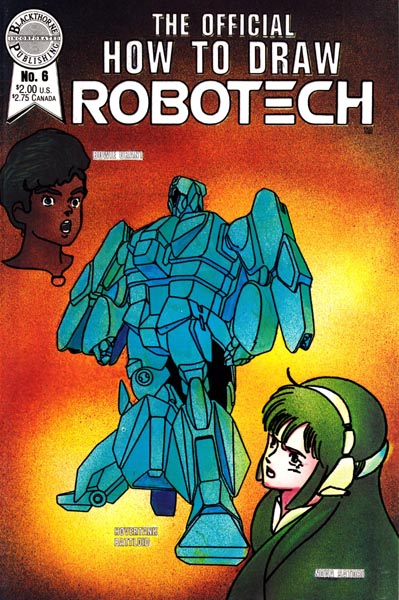
Are you ready? Pencils sharpened? Television tuned to whatever UHF station was currently airing Robotech? $2 paid for your Official How To Draw Robotech comic book? True Robotech Defenders are ready to pay the price! But first introductions and a special announcement.
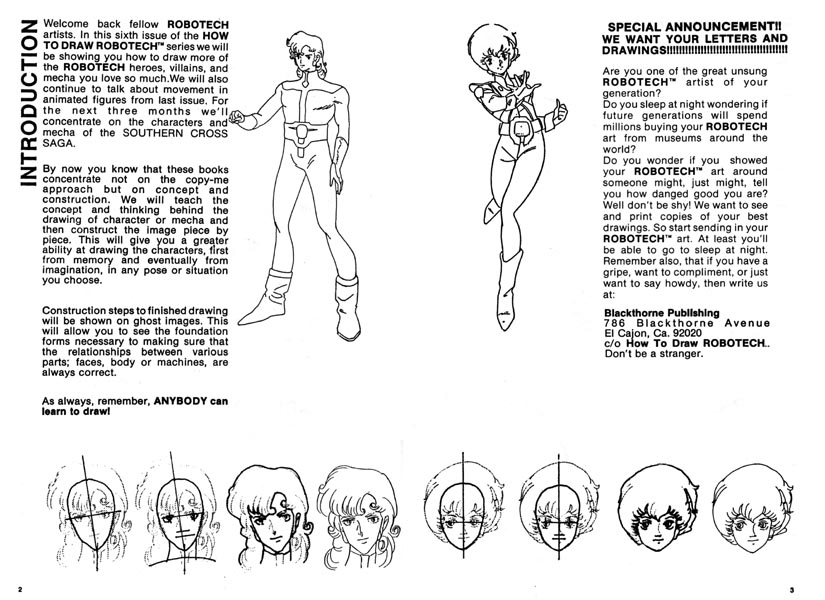
Remember this comic is not concentrating on the "copy-me" approach but is going to teach you the concept and thinking behind drawing characters. This comic is not going to have any input from the people who actually designed and drew these characters, because those guys are in Japan, and that's a long way away, and nobody at "Blackthorne Publishing" speaks Japanese or knows anyone who does. Anyway, anybody can learn to draw! Or if they can't, they can learn to teach!
By the way, if you sleep at night wondering if future generations will spend millions buying your ROBOTECH art from museums around the world, please seek immediate psychological aid.

The basic approach to drawing Robotech characters is to define your Line Of Action so that your Robotech story about chopping down a tree or pitching a baseball will have authenticity and a flowing sense of movement (as seen in "Robotech: The Paul Bunyan Chronicles").
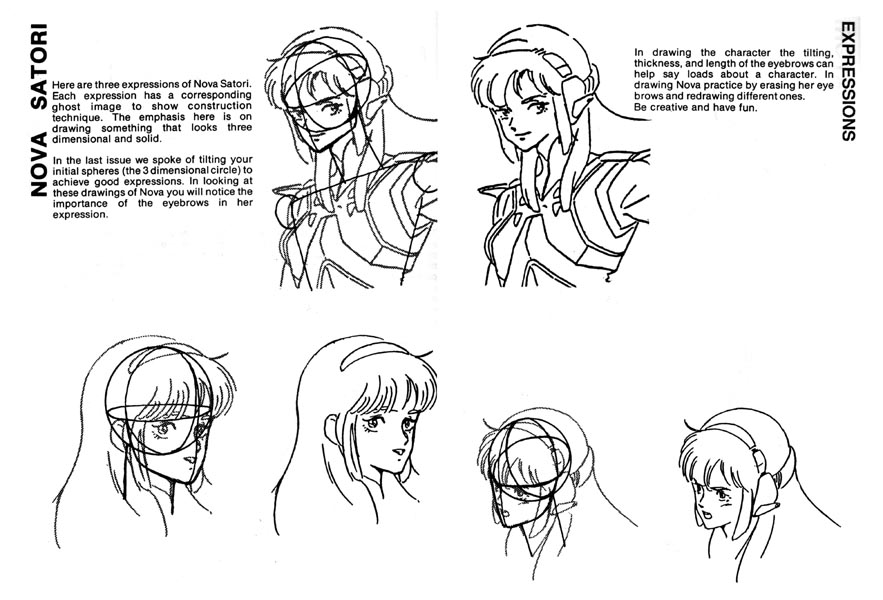
Here's Robotech character 'Nova Satori', named after someone finished reading a book on Buddhism and thought it was SO COOL, and who bears the distinctive look of character designer Hiroyuki Kitazume, an industry veteran of everything from Iczer-One to Mobile Suit Gundam to Urotsukidoji. Not that you'll learn about anime character designers from this comic book about drawing anime characters, that would be too helpful.

Officially, we're going with the "double diamond" approach to the human figure, which in some quarters is called "the hourglass". It's a very helpful technique, especially when drawn on top of completed character designs that somebody else already drew. Maybe this technique will work WITHOUT a finished drawing to lay it on top of. Who knows?
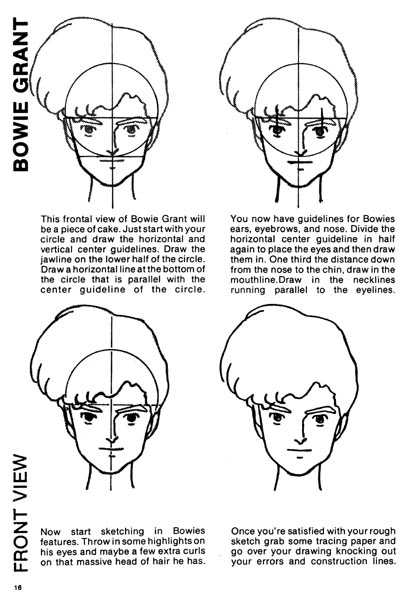
And now the moment you've all been waiting for, the full details on how to draw Bowie Grant, that popular Robotech character you've seen all the fan art of. Every Robotechie worth his or her "protoculture" will tell you straight up that Bowie Grant is his or her favorite Robotech character and that the parts of Robotech without Bowie Grant aren't worth watching. Rick Hunter, Minmay, Roy Fokker, Lancer, Zor Prime, Breetai, the bald majesty of the Robotech Masters, all pale into insignificance next to Bowie "The Man" Grant. I will say that Bowie looks more like a Tomonori Kogawa character, especially the hair, which we'd seen in his work for L.Gaim and Xabungle. Not that you could handle Xabungle.
But Bowie Grant isn't all there is to Robotech - there are also transforming robot fighting vehicles! In fact without these transforming robot fighting vehicles, the toy companies wouldn't have anything to sell and there wouldn't be any cash to make the cartoons in the first place, which, if you follow the logic trail all the way, means we'd be spared "The Official How To Draw Robotech". Which might not be a bad thing.
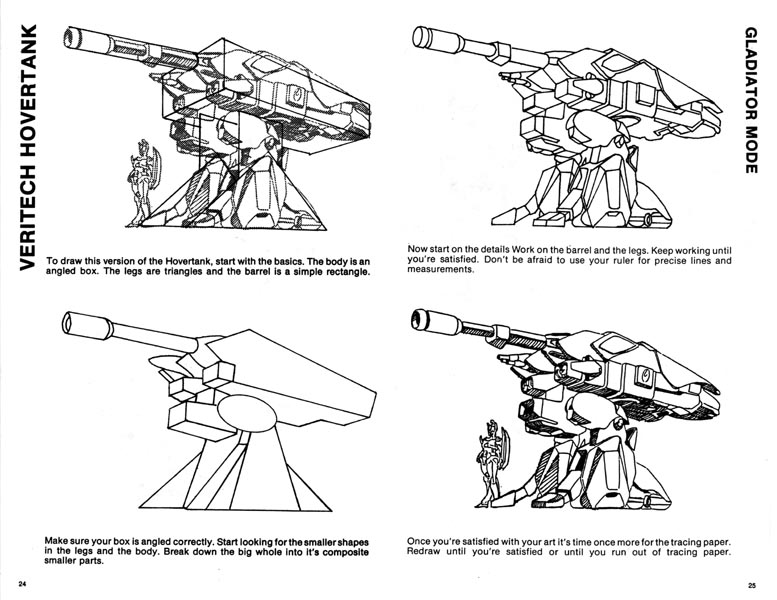
Okay, so what you do is you take your Southern Cross book, and you find a picture of a hovertank, and you draw some rectangles and cylinders on top of it, and then you refine those rectangles and cylinders until it looks like the original picture of a hovertank again, or you run out of tracing paper, because you have tracing paper and rather than just tracing the original image, like any rational person would do, you have to waste time with rectangles and cylinders.
So we're here with Issue Six of this Official How To Draw Robotech thing, obviously we're poking at the bottom of the Southern Cross barrel here, there can't be much more to this comic book series.

Wait, issue ELEVEN? This thing lasted eleven issues? Actually, to tell the truth it went all the way to 14 issues. I hope you have lots of tracing paper! Also I hope you have some quinine or something because it looks like Sara there has malaria or maybe yellow fever or is in the final jaundice stages of hepatitis. Not to mention Lancer's bad sunburn.
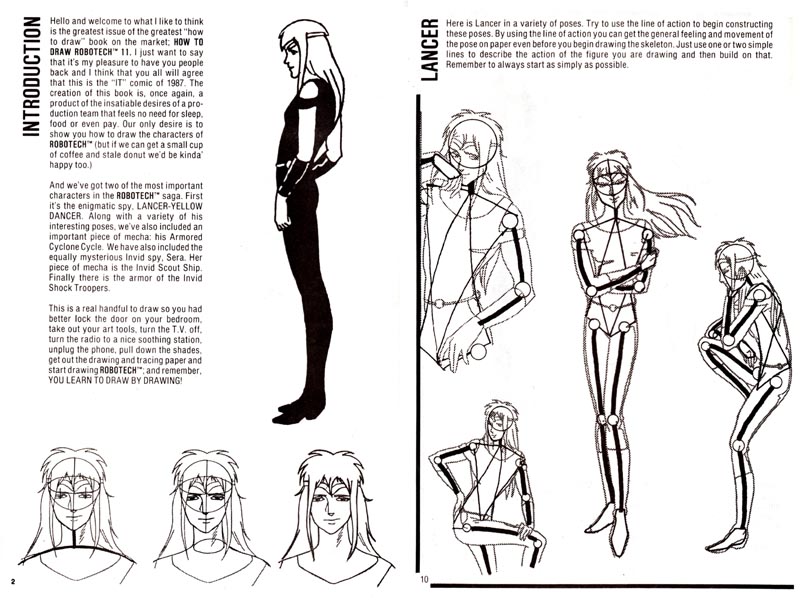
Here we have what they modestly call the greatest issue of the greatest "how to draw" book on the market, the "IT" comic of 1987. Not gonna say what "it" is. Now here's Lancer, one of the many characters designed by the ethereal and amazing Yoshitaka "Vampire Hunter D" Amano, and who here is presented without attribution or acknowledgement, wearing an amazing leotard decorated with thick lines and little circles.
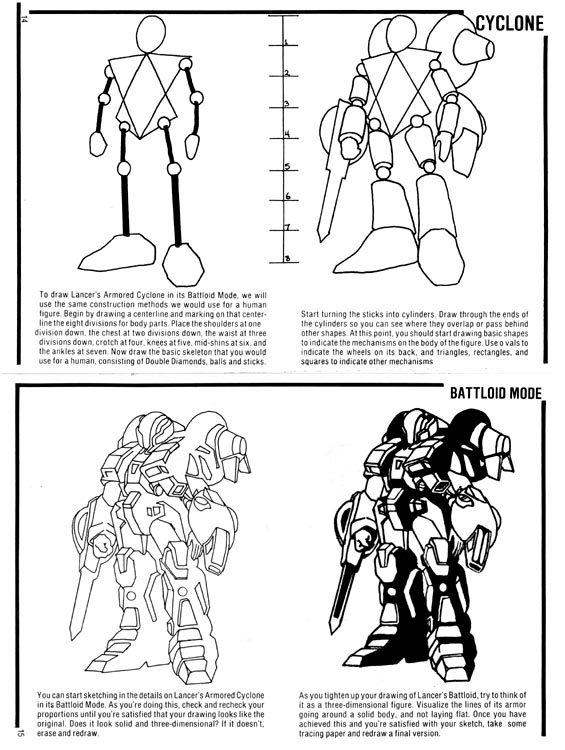
If you want to draw Lancer's Cyclone, then first off you need to spend two or three years drawing like an insane person, taking both life drawing and mechanical drafting courses, and never wasting a minute in front of the television watching cartoons. Using your facilty at both the human figure and at complex mechanical objects, you can naturally design a transforming motorcycle-robot combat suit that both functions in an animated film and as a toy. Or you can commission an entire studio of talented people to create it (Artmic) as Tatsunoko did when they created the original Mospeada television series. OR you can take an existing drawing and reduce it down to circles and lines and triangles and then build it back up again with your tracing paper. Whichever.
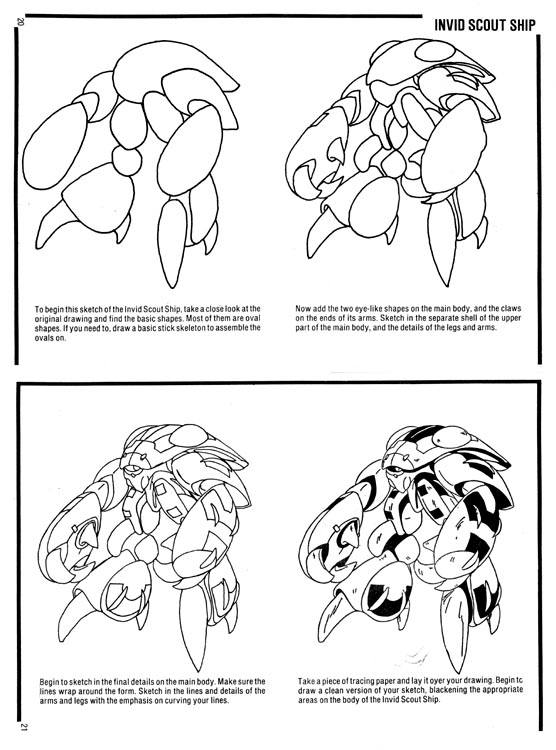
Of course you're going to want to draw the bad-guy robots as well, which in this case are made up largely of ovals fitting into other ovals and are actually kind of neat looking in a mutant crab sort of way. Just think, at this same time American cartoons were giving us the awesome high tech design work of the Get-Along Gang and Turbo Teen, which is why we all started watching Robotech to begin with.
So by this time (1987) there's undoubtedly a legion of Official How To Draw Robotech artists all burning through reams of tracing paper to deliver the best possible Robotech fan artwork. As someone who ran an anime fan club in this time period, who recieved his share of anime fan artwork for use in newsletters and fanzines, and who produced quite a bit of terrible anime fan artwork himself, I'm hesitant to display the Robotech fan artwork shown in this comic because, let's face it, nobody wants their decades-old goofy fan art unearthed from the bad fan art graveyard.

On the other hand, here's a drawing of Lynn Minmay sitting on a raft wearing a "No Problem" t-shirt, and that's something everybody needs to see. For science.
So you want to improve your drawing skills and more fully engage with the visual arts? Here's a handy list of instructional books.
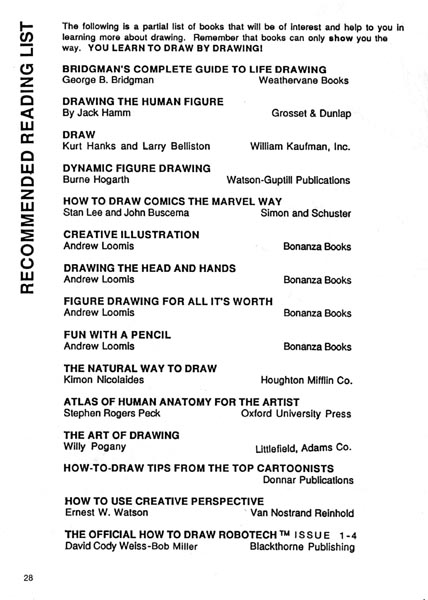
I would maybe not worry so much about that last one on the list there, it may not be quite as necessary as the others. Remember, you learn to draw by drawing, so turn off the TV, quit reading those comic books, place "How To Draw Comics The Marvel Way" back on the bookshelf, grab some paper and a pencil and start drawing! I want to hear nothing but pencils on paper for the next thirty years!
PREVIOUS STUPID COMICS
NEXT STUPID COMICS
BACK TO STUPID COMICS INDEX
BACK TO MAIN INDEX














